STIHL HLA 65 Owner's Manual
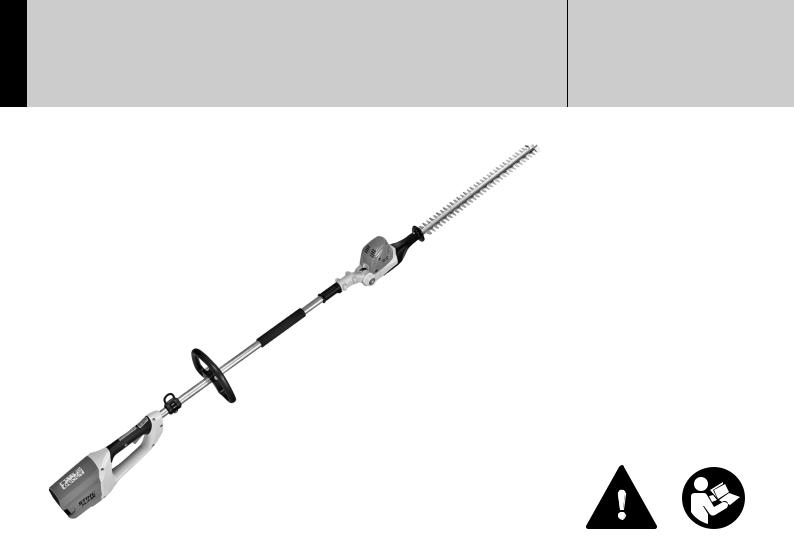
{
STIHL HLA 65
Instruction Manual
Manual de instrucciones
 WARNING
WARNING
Read and follow all safety precautions in Instruction Manual – improper use can cause serious or fatal injury.
 ADVERTENCIA
ADVERTENCIA
Lea y siga todas las precauciones de seguridad dadas en el manual de instrucciones – el uso incorrecto puede causar lesiones graves o mortales.
Instruction Manual 1 - 34
Manual de instrucciones 35 - 69
English
Contents
Printing inks contain vegetable oils, paper can be recycled.
Printed on chlorine-free paper Original Instruction Manual
© ANDREAS STIHL AG & Co. KG, 2012 0458-765-8621-A. VA0.J12. 0000006326_001_GB
Guide to Using this Manual |
2 |
Safety Precautions and Working |
|
Techniques |
2 |
General Power Tool Safety |
|
Warnings |
10 |
Description of Operation |
13 |
Using the Unit |
13 |
Assembling the Unit |
15 |
Connecting Charger to Power |
|
Supply |
16 |
Charging the Battery |
16 |
Light Emitting Diodes (LED) on |
|
Battery |
17 |
Light Emitting Diodes (LED) on |
|
Charger |
19 |
Adjusting the Cutter Bar |
19 |
Fitting the Harness |
21 |
Switching On |
21 |
Switching Off |
22 |
Storing the Machine |
23 |
Sharpening Instructions |
24 |
Maintenance and Care |
25 |
Main Parts |
26 |
Specifications |
27 |
Special Accessories |
29 |
Troubleshooting |
30 |
Maintenance and Repairs |
32 |
Battery Recycling |
32 |
Disposal |
32 |
Trademarks |
33 |
Addresses |
34 |
Allowonlypersonswhofullyunderstand this manual to operate your hedge trimmer.
To receive maximum performance and satisfaction from your STIHL hedge trimmer, it is important that you read, understand and follow the safety precautions and the operating and maintenance instructions in chapter "Safety Precautions and Working Techniques" before using your hedge trimmer. For further information you can go to www.stihlusa.com.
Contactyour STIHLdealer or theSTIHL distributor for your area if you do not understandanyoftheinstructionsinthis manual.
 WARNING
WARNING
Because a hedge trimmer is a highspeed cutting tool, some special safety precautionsmustbeobservedtoreduce the risk of personal injury. Careless or improperusemaycauseseriousoreven fatal injury.
{This instruction manual is protected by copyright. All rights reserved, especially the rights to reproduce, translate and process with electronic systems.
HLA 65 |
1 |
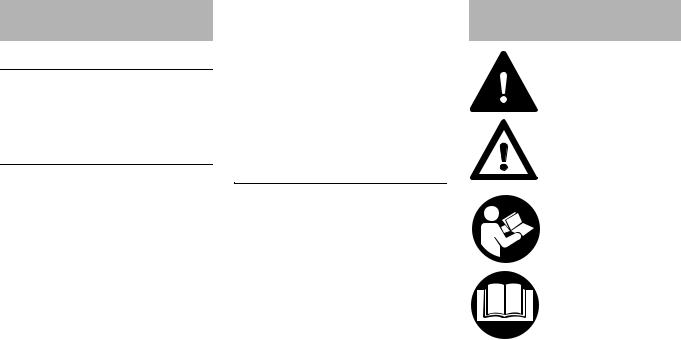
English
Guide to Using this Manual
Pictograms
All the pictograms attached to or embossed on the machine are shown and explained in this manual.
Symbols in Text
Many operating and safety instructions are supported by illustrations.
The individual steps or procedures describedinthe manualmaybe marked in different ways:
N A bullet marks a step or procedure.
A description of a step or procedure that refers directly to an illustration may contain item numbers that appear in the illustration. Example:
N Loosen the screw (1). N Lever (2) ...
In addition to the operating instructions, this manual may contain paragraphs that require your special attention. Such paragraphs are marked with the symbols and signal words described below:
 DANGER
DANGER
Indicates an imminent risk of severe or fatal injury.
 WARNING
WARNING
Indicates a hazardous situation which, if not avoided, could result in severe or fatal injury.
NOTICE
Indicates a risk of property damage, including damage to the machine or its individual components.
Engineering Improvements
STIHL’s philosophy is to continually improve all of its products. As a result, engineeringchangesandimprovements are made from time to time. Therefore, some changes, modifications and improvements may not be covered in this manual. If the operating characteristics or the appearance of your machine differs from those describedinthismanual,pleasecontact your STIHL dealer for assistance.
Safety Precautions and
Working Techniques
Because a hedge trim- mer is a high-speed, fastcutting power tool with sharp cutting blades and is powered by electricity, special safety precau- tions must be observed to reduce the risk of per- sonal injury.
It is important that you read, fully understand and observe the following safety precautions and warnings. Read the instruction manual and the safety precautions periodically. Careless or improper use may cause serious or fatal injury.
Have your STIHL dealer show you how to operate your power tool. Observe all applicable local safety regulations, standards and ordinances. The use of noise emitting power tools may be restricted to certain times by national or local regulations.
 WARNING
WARNING
Do not lend or rent your power tool without the instruction manual. Be sure that anyone using it understands the information contained in this manual.
2 |
HLA 65 |

 WARNING
WARNING
The use of this machine may be hazardous. If the cutting tool comes in contact with your body, it will cut you.
Use your hedge trimmer only for cutting hedges, shrubs, scrub and similar material.
 WARNING
WARNING
Do not use it for other purposes, since misuse may result in personal injury or property damage, including damage to the machine.
 WARNING
WARNING
Minors should never be allowed to use this power tool. Bystanders, especially children, and animals should not be allowed in the area where it is in use.
 WARNING
WARNING
Toreducetheriskofinjurytobystanders and damage to property, never let your power tool run unattended. When it is not in use (e.g. during a work break), shut it off and make sure that unauthorized persons do not use it. To do this, move retaining latch to ƒand remove the battery from the power tool.
Most of these safety precautions and warnings apply to the use of all STIHL hedge trimmers. Different models may have different parts and controls. See the appropriate section of your instruction manual for a description of the controls andthe functionoftheparts of your model.
Always remove the battery and move retaining latch to ƒbefore transporting, storing or carrying out any work on the power tool. This avoids the risk of the motor starting unintentionally.
STIHL recommends the use of original STIHL replacement parts. They are specifically designed to match your model and meet your performance requirements.
Safe use of a hedge trimmer involves
1.the operator
2.the power tool
3.the use of the power tool.
THE OPERATOR
Physical Condition
You must be in good physical condition and mental health and not under the influence of any substance (drugs, alcohol, etc.) which might impair vision, dexterity or judgment. Do not operate this machine when you are fatigued.
 WARNING
WARNING
Be alert – if you get tired, take a break. Tiredness may result in loss of control. Working with any power tool can be strenuous.Ifyouhaveanyconditionthat mightbeaggravatedbystrenuouswork, check with your doctor before operating this machine.
English
 WARNING
WARNING
Prolonged use of a power tool (or other machines) exposing the operator to vibrations may produce whitefinger disease (Raynaud's phenomenon) or carpal tunnel syndrome.
These conditions reduce the hand's ability to feel and regulate temperature, produce numbness and burning sensations and may cause nerve and circulation damage and tissue necrosis.
All factors which contribute to whitefinger disease are not known, but cold weather, smoking and diseases or physical conditions that affect blood vessels and blood transport, as well as high vibration levels and long periods of exposure to vibration are mentioned as factorsinthedevelopmentofwhitefinger disease. In order to reduce the risk of whitefinger disease and carpal tunnel syndrome, please note the following:
HLA 65 |
3 |

English
Most STIHL power tools are available with an anti-vibration ("AV") system designed to reduce the transmission of vibrations created by the machine to the operator's hands. An AV system is recommended for those persons using power tools on a regular or sustained basis.
–Wear gloves and keep your hands warm.
–Keep the AV system well maintained. A power tool with loose components or with damaged or worn AV elements will tend to have higher vibration levels.
–Maintain a firm grip at all times, but do not squeeze the handles with constant, excessive pressure. Take frequent breaks.
All the above-mentioned precautions do not guarantee that you will not sustain whitefinger disease or carpal tunnel syndrome. Therefore, continual and regular users should closely monitor the condition of their hands and fingers. If any of the above symptoms appear, seek medical advice immediately.
Proper Clothing
 WARNING
WARNING
To reduce the risk of injury, the operator should wear proper protective apparel.
 WARNING
WARNING
To reduce the risk of injury to your eyes never operate your power tool unless wearing goggles or properly fitted protective glasses with
4
adequate top and side protection complying with ANSI Z 87.1 (or your applicable national standard). Wear an approved safety hard hat when there is a risk of head injury.
STIHL recommends the use of sound barriers (ear plugs or ear mufflers) to protect your hearing.
Clothing must be sturdy and snug-fitting but allow
complete freedom of movement. Wear long pants made of heavy material to help protect your legs. Do not wear shorts.
Avoid loose-fitting jackets, scarfs, neckties, jewelry, flared or cuffed pants, unconfined long hair or anything that could become caught on branches, brush or the moving parts of the unit. Secure hair so it is above shoulder level.
Good footing is very important. Wear sturdy boots with nonslip soles.
Never wear sandals, flipflops or go barefoot.
Always wear gloves when handling the machine and the cutting tool. Heavy-duty, nonslip gloves improve your grip and help to protect your hands.
THE POWER TOOL
For illustrations and definitions of the power tool parts see the chapter on "Main Parts."
 WARNING
WARNING
Nevermodifythispowertoolinanyway, since this may increase the risk of personal injury. Only attachments supplied by STIHL or expressly approved by STIHL for use with the specific STIHL model are authorized. Although certain unauthorized attachments are useable with STIHL power tools, their use may, in fact, be extremely dangerous.
If your power tool is subjected to unusuallyhighloadsforwhichitwasnot designed (e.g. heavy impact or a fall), always check that it is in good condition before continuing work – see also "Before Starting Work." Make sure the safety devices are working properly. Do notcontinueoperatingyourpowertoolif itisdamaged.Incaseofdoubt,havethe machine checked by your STIHL servicing dealer.
Battery
 WARNING
WARNING
Improperuseorhandling of the battery may result in a risk of fire, explosion and/or burns, including chemical burns. Do not disassemble,crush,heat
above 212 °F (100 °C), expose to fire or incinerate. Never expose the battery to microwaves or high pressures.
Donotplace the batteryonornearfires, stoves or in other high-temperature locations. Do not place the battery in direct sunlight or store it inside a vehicle in hot weather. Doing so may cause the battery to generate heat, rupture or
HLA 65
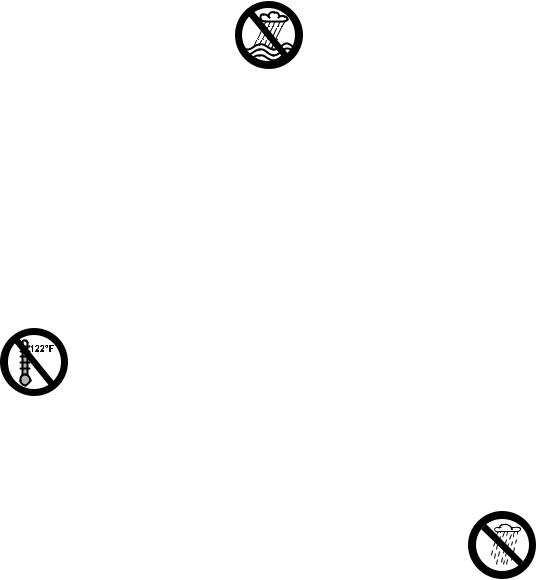
ignite.Usingthebatteriesinthismanner may also result in a loss of performance and a shortened battery life expectancy.
In case of fire: Stay clear of any vapors or gases generated, taking wind directionintoaccount.Ifpossiblewithout danger, remove battery from the vicinity of the fire. In principle, cooling the battery or extinguishing the fire with water is possible. It is preferable to extinguish the fire with a multipurpose drychemicalfireextinguisher.Asforany fire, evacuate the area and fight the fire from a safe distance. Once the fire has been extinguished, the area should be monitored (fire watch) in case of a flareup, until the battery has cooled sufficiently. Restrict access to the area until completion of clean-up. Do not touch the burnt battery or any spilled liquids. Use inert absorbent to absorb spilled liquids.
Use and store the bat- tery only within a
temperature range from 14 °F (-10 °C) up to no more than 122 °F
(+ 50 °C). Protect the bat- tery from direct sunlight.
 WARNING
WARNING
Use STIHL batteries only with STIHL power tools and charge them only with STIHL chargers. Replace battery with STIHL battery only. Use only original STIHL rechargeable batteries.
Charge the battery before use.
Protect from rain – do not immerse in fluids.
 WARNING
WARNING
Do not open, drop, hit or damage battery. Never insert objects into the battery's cooling slots, since they may damage the battery. The battery contains safety features and devices which, if damaged, may cause the battery to generate heat, rupture or ignite. Never use or charge a defective, damaged, cracked or deformed battery.
Immediately discontinue use of the battery if, while using, charging or storing, it emits an unusual smell, feels hot or appears abnormal in any other way.
 WARNING
WARNING
Fluid may leak from the battery if it is damaged or is not used properly – avoid contact with the skin! Leaking battery fluid can cause skin irritation and chemical burns. In the event of accidental contact, immediately rinse thoroughly with mild soap and water. If fluid gets into your eye(s), do not rub your eye(s) and rinse water over the openeye(s)for15minutesatleast.Also seek medical attention immediately.
 WARNING
WARNING
Never bridge (short circuit) the battery terminalswithmetallicobjects,sincethis may damage the battery and possibly cause a fire. Keep a battery that is not in
English
use away from metal objects (e.g. nails, coins, jewelry). Do not use metal containers for transporting batteries.
Storethebatteryout of reachofchildren in a cool and dry area away from direct sunlight and excess heat or cold (14 °F
– 122 °F (-10 °C – +50 °C)).
Charger
Use only original STIHL chargers.
Use only for charging geometrically matching STIHL batteries with a maximum capacity of 50 Ah and a maximum voltage of 42 V.
Never charge defective, leaking or deformed batteries.
Connect the charger only to a power supply with the voltage and frequency specified on the rating plate. Always connect the charger to a properly installed wall outlet.
Never use a charger with damaged housing,damagedpowersupplycordor damaged plug. Do not operate the charger if it has received a sharp blow, been dropped or otherwise damaged in any way.
Do not open or dissassemble charger – there are no user serviceable parts inside.
Store charger out of the reach of children.
Protect the charger from rain and dampness. Keep charger dry.
HLA 65 |
5 |

English
Use and store charger only indoors in dry rooms.
Operate charger at temperatures between 41 °F (5 °C) and 104 °F (40 °C).
Allow the charger to cool down normally
– do not cover it.
Neverbridgethecontactsofthecharger with metallic objects (e.g. nails, coins, jewelry) – short circuit. The charger may be damaged by a short circuit.
In the event of smoke or fire in the charger, disconnect it from outlet immediately.
 WARNING
WARNING
To reduce the risk of electric shock or short circuit, do not insert any objects into the charger's cooling slots.
 WARNING
WARNING
The charger heats up during the charging process. Do not operate on an easily combustible surface (e.g. paper, texiles) or in an easily combustible environment – risk of fire.
 WARNING
WARNING
Do not operate in a hazardous location, i.e. in a location where there are combustible liquids (fumes), vapors or dusts. Chargers can produce sparks, which may ignite the dust or vapors – risk of explosion.
6
Check the charger's power supply cord and plug regularly for dam-
age. If the power supply cord or plug is damaged, immediately disconnect the plug from the wall outlet to avoid the risk of electric shock.
Never jerk the power supply cord to disconnect it from the wall outlet. To unplug, grasp the plug, not the cord. Have a damaged power supply cord repaired by an experienced electrician.
Do not use the power supply cord for any other purpose, e.g. for carrying or hanging up the charger.
Never use power supply cords that do not comply with regulations.
Make sure the power supply cord is located and/or marked so that it will not be stepped on, tripped over, come in contact with sharp edges or moving parts or otherwise be subjected to damage or stress.
An extension cord should not be used unless absolutely necessary. If an extension cord must be used, plug the charger into a properly wired 16 gauge (AWG 16) or heavier gauge extension cord with blades that are the same number, size and shapes as the blades on the charger.
To reduce the risk of electric shock:
–Always connect the unit to a properly installed wall outlet.
–Make sure the insulation of the power supply cord and plug is in good condition.
Unplug the power supply cord from the outlet when charger is not in use.
Never store the battery in the charger.
THE USE OF THE POWER TOOL
Remove the battery from the power tool before:
–carrying out tests and adjustments or cleaning work
–working on the cutting attachment
–leaving the power tool unattended
–transporting the power tool
–storing the power tool
–performing repairs and maintenance work
–in the event of danger or in an emergency
Transporting the Unit
 WARNING
WARNING
To reduce the risk of injury from blade contact, never carry or transport your power tool with the cutting blades moving.
 WARNING
WARNING
Always switch off the power tool, move retaining latch to ƒ, remove the battery and fit the scabbard over the cutting blades – even when you carry the unit for short distances. When transporting it in a vehicle, properly secure the power tool to prevent turnover and damage.
HLA 65
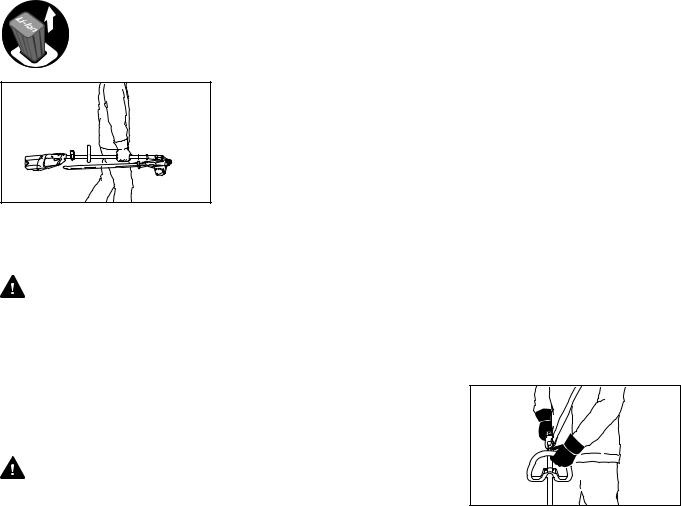
Remove the battery from the power tool. This avoids the risk of the motor starting unintentionally.
4866BA001 KN
Grip the shaft in a manner that the machine is balanced horizontally.
Before Starting Work
WARNING
Alwayscheckyour power toolforproper condition and operation before starting, particularly the trigger switch, trigger switch lockout, switch lever and retaining latch. The trigger switch, trigger switch lockout and switch lever must move freely and always spring back to the idle position (retaining latch on ‚). Never attempt to modify the controls or safety devices.
WARNING
Your power tool is equipped with a system designed to quickly stop the cutting blades – they come to an immediate standstill as soon as you release the trigger switch and/or the switch lever on the loop handle.
Check this function at regular short intervals. To reduce the risk of injury, do notoperateyourpowertoolifthecutting blades continue to run. Contact your servicing dealer.
 WARNING
WARNING
Never use a power tool that is damaged or not properly maintained.
Keep the handles clean and dry at all times; it is particularly important to keep them free of moisture, pitch, oil, grease orresininorderforyoutomaintainafirm grip and properly control your power tool.
 WARNING
WARNING
The cutting blades must be properly tightened and in safe operating condition. Inspect for loose parts (nuts, screws, etc.) and for cracked, bent, warped or damaged blades. Regularly check the condition and tightness of the cutting blades – with the motor stopped, retaining latch on ƒand battery removed! Replace damaged cutting blades before using the power tool. Always keep blades sharp.
STIHL recommends that you always spray the cutting blades with STIHL resin solvent before starting work – with the motor stopped, retaining latch on ƒ and battery removed! You can obtain this protective spray from your dealer. Apply generously.
Check contacts in battery compartment for foreign matter. Keep clean.
Fit the battery correctly – it must engage audibly.
English
Forspecificstartinginstructions,seethe appropriate section of your instruction manual.
 WARNING
WARNING
To reduce the risk of injury from blade contact, be absolutely sure that the cutting blades are clear of you and all otherobstructionsandobjects,including the ground.
 WARNING
WARNING
Your power tool is a one-person machine. Do not allow other persons in the general work area, even when starting.
During Operation
Holding and Controlling the Power Tool
Always hold the unit firmly with both hands on the handles while you are working. Wrap your fingers and thumbs around the handles.
Right-Handers
4866BA002 KN
Righthandonthecontrolhandleandleft hand on the loop handle or handle hose on the drive tube.
HLA 65 |
7 |
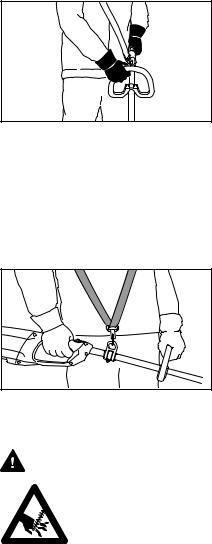
English
Left-Handers
4866BA003 KN
Lefthandonthecontrolhandleandright hand on the loop handle or handle hose on the drive tube.
Make sure you have firm and secure footing and hold the unit so that the cutting blades are always away from your body.
Harness |
4866BA004 KN |
The machine can be carried on a harness to relieve the weight on the operator's arms.
WARNING
Never attempt to operate your power tool with one hand. Loss of control of the power tool resulting in serious or fatal injury may result. To reduce the risk
ofcutinjuries,keephandsandfeetaway from the cutting blades. Never touch
moving cutting blades with your hand or anyotherpartofyourbody.Donottouch the cutting blades while the motor is running. If the cutting blades become jammed by thick branches or other obstructions, switch off the motor immediately, move retaining latch to ƒ and remove the battery before attempting to free the blades.
 WARNING
WARNING
Do not overreach. Keep proper footing and balance at all times. Special care mustbetakeninslipperyconditions(wet ground,snow)andindifficult,overgrown terrain.Watchforhiddenobstaclessuch as tree stumps, roots and ditches to avoidstumbling.Forbetterfooting,clear away fallen branches, scrub and cuttings. Be extremely cautious when working on slopes or uneven ground.
Working Conditions
Operate your power tool only under good visibility and daylight conditions only. Work carefully.
Do not cut any material other than hedgesorsimilarsoftvegetation.Donot cut stems greater than 17 mm
(11/16 inch) thick.
 WARNING
WARNING
If the vegetation being cut or the surrounding ground is coated with a chemical substance (such as an active pesticide or herbicide), read and follow the instructions and warnings that accompanied the substance at issue.
 WARNING
WARNING
Inhalation of certain dusts, especially organic dusts such as mold or pollen, can cause susceptible persons to have an allergic or asthmatic reaction.
Substantial or repeated inhalation of dustandotherairbornecontaminants,in particular those with a smaller particle size, may cause respiratory or other illnesses. Control dust at the source where possible. Use good work practices, such as operating the unit so that the wind or operating process directsanydustraisedbythepowertool away from the operator. Follow the recommendations of EPA/OSHA /NIOSH and occupational and trade associations with respect to dust ("particulate matter"). When the inhalation of dust cannot be substantially controlled, i.e., kept at or neartheambient(background)level,the operator and any bystanders should wear a respirator approved by NIOSH/MSHA for the type of dust encountered.
If the hedge is very dusty or dirty, spray thebladeswithSTIHLresinsolventfrom time to time during cutting. This helps reduce blade friction as well as the aggressive effects of sap and the buildup of dirt particles.
Operating Instructions
 WARNING
WARNING
In the event of an emergency, switch off the motor immediately, move retaining latch to ƒand remove the battery.
8 |
HLA 65 |
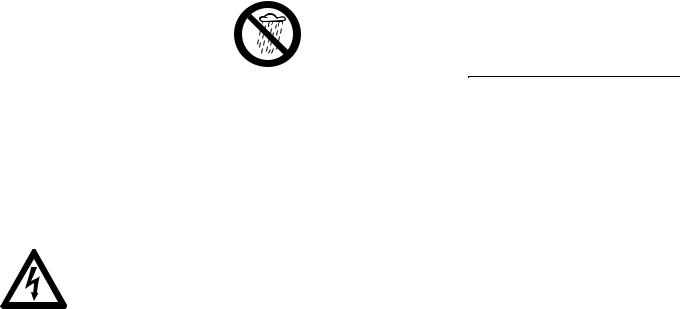
 WARNING
WARNING
Before you start work, examine the hedgeareaforstones,fencewire,metal or other solid objects which could damage the cutting blades.
Take particular care when cutting hedges next to or against wire fences. Do not touch the wire with the cutting blades. When working close to the ground, make sure that no sand, grit or stones get between the cutting blades.
Striking solid foreign objects such as stones, fence wire or metal could damagethecuttingattachmentandmay cause blades to crack, chip or break. STIHL does not recommend the use of your power tool when cutting in areas where the blades could contact such objects.
 WARNING
WARNING
Observe the cutting blades at all times – do not cut any areas of the hedge that you cannot see. When cutting the top of a taller hedge, check the other side of the hedge frequently for bystanders, animals and obstructions. Do not damage the property of other persons
 WARNING
WARNING
Do not rely on the tool’s insulation against electric shock. To reduce the risk of electrocution, never operate this power tool in the vicinity of any wires or
cables (power, etc.) which may be carrying electric current.
Checkthecuttingbladesatregularshort intervals during operation, or immediately if there is a noticeable change in cutting behavior:
–Switch off the motor.
–Move retaining latch to ƒ.
–Remove the battery.
–Check condition and tightness, look for cracks.
–Check sharpness.
–Replace damaged or dull cutting blades immediately, even if they have only superficial cracks.
The drive motor is not waterproof. Never work with the power tool in the rain or in wet or very damp locations.
Do not leave the machine outdoors in the rain.
Your power tool is equipped with a system designed to quickly stop the cutting blades – they come to an immediate standstill as soon as you release the trigger switch and/or the switch lever on the loop handle.
 WARNING
WARNING
To reduce the risk of injury from loss of control,never workon aladder,in atree or any other insecure support. Never hold the machine above shoulder height.
English
Be particularly alert and cautious when wearing hearing protection because your ability to hear warnings (shouts, alarms, etc.) is restricted.
 WARNING
WARNING
To reduce the risk of fire, always clean plant residue, chips, leaves and excess lubricant off the motor.
After Finishing Work
Always clean dust and dirt off the power tool–donotuseanygreasesolventsfor this purpose.
Spray the blades with STIHL resin solvent.Runthemotorbrieflysothatthe solvent is evenly distributed.
MAINTENANCE, REPAIR AND STORING
If you make a warranty claim for a componentwhichhasnotbeenserviced or maintained properly or if nonapproved replacement parts were used, STIHL may deny coverage.
 WARNING
WARNING
Use only identical STIHL replacement partsformaintenanceandrepair.Useof non-STIHL parts may cause serious or fatal injury.
Strictly follow the maintenance and repair instructions in the appropriate section of your instruction manual.
Please also refer to the maintenance chart in this manual.
HLA 65 |
9 |
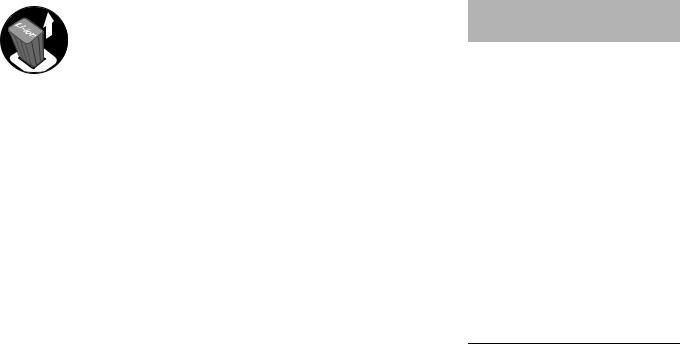
English
Always move retaining latch to ƒand remove the battery from the
power tool before carry-
ing out any repairs or maintenance work, such as replacing the cutting blades. This avoids the risk of the motor starting unintentionally.
 WARNING
WARNING
Always switch off the motor, move retaining latch to ƒ, remove the battery and make sure that the cutting tool is stopped before doing any maintenance orrepairworkorcleaningthepowertool. Do not attempt any maintenance or repair work not described in your instruction manual. Have such work performed by your STIHL servicing dealer only.
Wear gloves when handling or performing maintenance on the blades.
 WARNING
WARNING
Never repair damaged cutting attachments by welding, straightening or modifying the shape. This may cause parts of the cutting blades to come off and result in serious or fatal injuries.
Keep the cutting blades sharp. Tighten allnuts,bolts andscrewsaftereachuse.
Regularly check the electrical contacts and ensure that the insulation of the power cord and plug of the charger is in good condition and show no sign of aging (brittleness).
Electrical components, e.g. power cord of charger, may only be repaired or replaced by a qualified electrician.
Clean plastic components with a cloth. Do not use aggressivedetergents.They may damage the plastic.
Do not spray the machine with water.
Do not clean your machine with a pressure washer. The solid jet of water may damage parts of the machine.
Clean cooling air inlets in motor housing as necessary.
Keep the battery guides free from foreign matter – clean as necessary.
Store the power tool in a dry, locked location with the retaining latch on ƒ, the battery removed and out of reach of children.
General Power Tool Safety
Warnings
This chapter relays the prescribed wording of general safety advice for handheldmotor-operatedelectrichedge trimmers contained in UL 60745-1 and UL 60745-2-15.
 WARNING
WARNING
Read all safety warnings and all instructions. Failure to follow the warnings and instructions may result in electric shock, fire and/or serious injury.
Save all warnings and instructions for future reference.
The term "power tool" in the warnings refers to your mains-operated (corded) power tool or battery-operated (cordless) power tool.
1) Work area safety
a)Keep work area clean and well lit. Cluttered or dark areas invite accidents.
b)Do not operate power tools in explosive atmospheres, such as in the presence of flammable liquids, gases or dust. Power tools create sparks which may ignite the dust or fumes.
c)Keepchildrenandbystandersaway while operating a power tool. Distractions can cause you to lose control.
10 |
HLA 65 |

2) Electrical safety
a)Power tool plugs must match the outlet. Never modify the plug in any way. Do not use any adapter plugs with earthed (grounded) power tools. Unmodified plugs and matching outlets will reduce risk of electric shock.
b)Avoid body contact with earthed or grounded surfaces such as pipes, radiators, ranges and refrigerators. Thereisanincreasedriskofelectric shock if your body is earthed or grounded.
c)Donotexposepowertoolstorainor wet conditions. Water entering a power tool will increase the risk of electric shock.
d)Do not abuse the cord. Never use the cord for carrying, pulling or unplugging the power tool. Keep cord away from heat, oil, sharp edgesormovingparts.Damagedor entangled cords increase the risk of electric shock.
e)When operating a power tool outdoors, use an extension cord suitable for outdoor use. Use of a cord suitable for outdoor use reduces the risk of electric shock.
f)If operating a power tool in a damp location is unavoidable, use a residual current device (RCD) protected supply. Use of an RCD reduces the risk of electric shock.
3) Personal safety
a)Stayalert,watchwhatyouaredoing and use common sense when operatingapowertool.Donotusea power tool while you are tired or under the influence of drugs, alcohol or medication. A moment of inattention while operating power tools may result in serious personal injury.
b)Usepersonalprotectiveequipment. Always wear eye protection. Protective equipment such as dust mask, non-skid safety shoes, hard hat, or hearing protection used for appropriate conditions will reduce personal injuries.
c)Prevent unintentional starting. Ensure the switch is in the offpositionbeforeconnectingtopower source and/or battery pack, picking up or carrying the tool. Carrying power tools with your finger on the switch or energizing power tools that have the switch on invites accidents.
d)Remove any adjusting key or wrench before turning the power tool on. A wrench or a key left attached to a rotating part of the power tool may result in personal injury.
e)Do not overreach. Keep proper footing and balance at all times. This enables better control of the power tool in unexpected situations.
English
f)Dress properly. Do not wear loose clothing or jewelry. Keep your hair, clothing and gloves away from moving parts. Loose clothes, jewelryorlonghaircanbecaughtin moving parts.
g)If devices are provided for the connection of dust extraction and collection facilities, ensure these are connected and properly used. Use of dust collection can reduce dust-related hazards.
4) Power tool use and care
a)Donotforcethepowertool.Usethe correct power tool for your application. The correct power tool willdothejobbetterandsaferatthe rate for which it was designed.
b)Do not use the power tool if the switch does not turn it on and off. Any power tool that cannot be controlled with the switch is dangerous and must be repaired.
c)Disconnect the plug from the power source and/or the batterypack from the power tool before making any adjustments,changingaccessories, or storing power tools. Such preventive safety measures reduce the risk of starting the power tool accidentally.
d)Store idle power tools out of the reach of children and do not allow persons unfamiliar with the power tool or these instructions to operate the power tool. Power tools are dangerousinthehandsofuntrained users.
HLA 65 |
11 |

English
e)Maintain power tools. Check for misalignment or binding of moving parts, breakage of parts and any other condition that may affect the power tool's operation. If damaged, have the powertool repaired before use. Many accidents are caused by poorly maintained power tools.
f)Keep cutting tools sharp and clean. Properly maintained cutting tools with sharp cutting edges are less likely to bind and are easier to control.
g)Use the power tool, accessories and tool bits etc.inaccordance with these instructions, taking into account the working conditions and theworktobeperformed.Useofthe power tool for operations different fromthoseintendedcouldresultina hazardous situation.
5) Battery tool use and care
a)Recharge only with the charger specified by the manufacturer. A charger that is suitable for one type of battery pack may create a risk of fire when used with another battery pack.
b)Use power tools only with specifically designated battery packs. Use of any other battery packsmaycreateariskofinjuryand fire.
c)When battery pack is not in use, keep it away from other metal objects, like paper clips, coins, keys, nails, screws or other small metal objects, that can make a connection from one terminal to another. Shorting the battery terminalstogethermaycauseburns or a fire.
d)Under abusive conditions, liquid may be ejected from the battery; avoidcontact.Ifcontactaccidentally occurs, flush with water. If liquid contacts eyes, additionally seek medical help. Liquid ejected from the battery may cause irritation or burns.
6) Service
a)Have your power tool serviced by a qualified repair person using only identical replacement parts. This will ensure that the safety of the power tool is maintained.
Hedge Trimmer Safety Warnings
–Keep all parts of the body away from the cutter blade. Do not removecutmaterialorholdmaterial to be cut when blades are moving. Make sure the switch is off when
clearing jammed material. Blades coast after turn off. A moment of inattention while operating the hedgetrimmermayresultinserious personal injury.
–Carry the hedge trimmer by the handle with the cutter blade stopped. Proper handling of the hedge trimmer will reduce possible personal injury from the cutter blades.
–Hold the power tool by insulated gripping surfaces only, because the cutter blade may contact hidden wiring. Cutter blades contacting a "live"wiremaymakeexposedmetal parts of the power tool "live" and could give the operator an electric shock.
 DANGER
DANGER
–Keep hands away from blade. Contact with blade will result in serious personal injury.
12 |
HLA 65 |
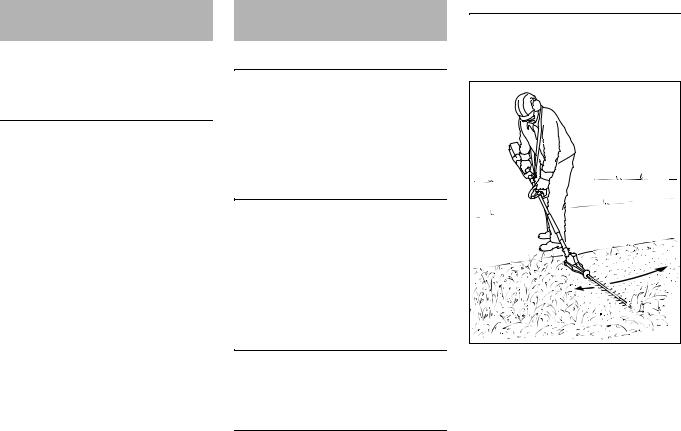
Description of Operation
The power tool is operated with a rechargeable battery. Use only STIHL chargers to recharge the battery.
Data exchange
The power tool, battery and charger communicate with each other. The charger charges the battery and the battery supplies the necessary power onlyifdataexchangefunctionsproperly. For this reason you should operate your powertoolonlywiththeapprovedSTIHL batteries and STIHL chargers.
Using the Unit
Cutting Season
Observe country-specific or municipal rules and regulations for cutting hedges.
Do not use your hedge trimmer during rest periods cutomary in the neighborhood.
Cutting Sequence
Ifa radical cutisnecessary, cuta littleat a time in several stages.
Use lopping shears to cut out thick branches first.
Cut the sides of the hedge first, then the top.
Disposal
Do not throw cuttings into the garbage can – they can be composted.
Preparations
NAdjust angle of cutter bar – see "Adjusting the Cutter Bar"
N Remove the blade scabbard.
NPutontheharness–see"Fittingthe Harness".
NConnect machine to harbess – see "Fitting the Harness".
English
Working Technique
Horizontal Cut (with cutter bar at an
angle) |
4866BA005 KN |
Cutting close to the ground from a standing position, e.g. low shrubs.
Swingthecutterbarbackandforthinan arc as you move along – use both sides of the cutting blades.
The hedge trimmer is unsuitable for mowing.
HLA 65 |
13 |

English
Vertical Cut (with cutter bar at an angle)
4866BA006 KN |
Cutting without standing directly next to the hedge, e.g. flowerbed between operator and hedge.
Swing the cutter bar up and down in an arc as you move along the hedge – use both sides of the cutting blades.
Vertical Cut (with straight cutter bar)
4866BA007 KN |
Extra long reach without the need for other aids.
Swing the cutter bar up and down in an arc as you move along the hedge – use both sides of the cutting blades.
Overhead Cut (with cutter bar at an
angle) |
4866BA008 KN |
Hold the hedge trimmer vertically and swing it in an arc to make maximum use of its reach.
 WARNING
WARNING
Any working position above head height is tiring. To minimize the risk of accidents, work in such positions for short periods only. Set angle of adjustablecutterbartomaximumsothat theunitcanbeheldinalower,lesstiring position (with shoulder strap) while still providing adequate reach.
14 |
HLA 65 |
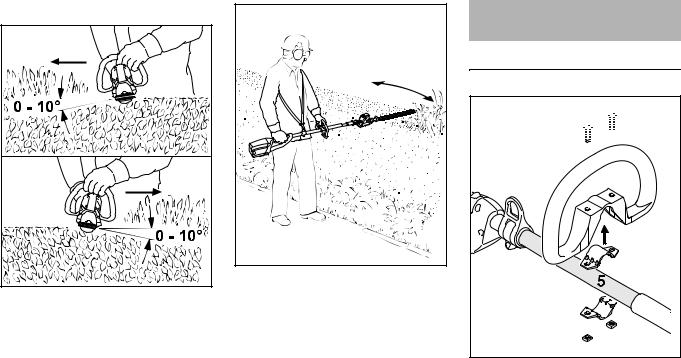
Horizontal Cut (with straight cutter bar)
4866BA009 KN |
Hold the cutter bar at an angle of 0° to 10° as you swing the hedge trimmer horizontally.
4866BA010 KN |
Swing the cutter bar in an arc towards the outside of the hedge so that the cuttings are swept to the ground.
English
Assembling the Unit
Mounting the Loop Handle
 7 7
7 7 
 8
8
8  2
2
3
|
1 |
|
6 |
4 |
KN |
9 |
9 |
4866BA016 |
|
||
|
|
NPlace the clamp (1) in the loop handle (2) and position them both against the drive tube (5) between the carrying ring (3) and handle hose (4).
NPlace the clamp (6) against the drive tube.
N Line up the holes.
NInsert the screws (7) with washers (8).
NFit the square nuts (9) and screw home the screws.
N Line up the loop handle.
N Tighten down the screws firmly.
HLA 65 |
15 |
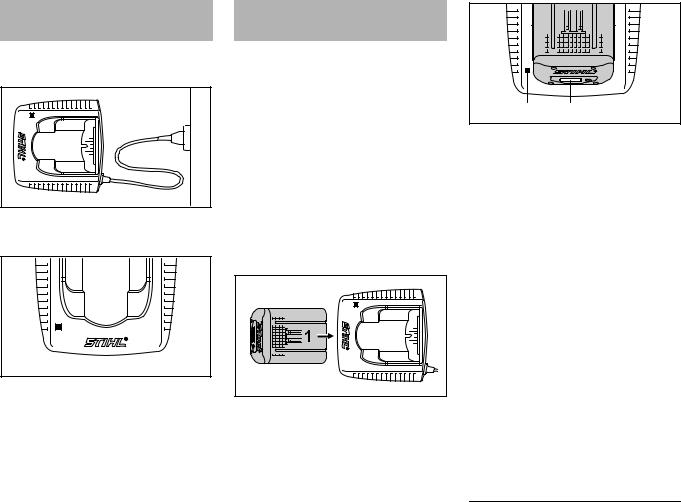
English
Connecting Charger to Power Supply
Mains voltage and operating voltage must be the same.
1 2
3901BA015 KN
NInsert the mains plug (1) in the wall outlet (2).
1 |
KN |
|
3901BA019 |
A self test is performed after the charger isconnectedtothepowersupply.During this process the light emitting diode (1) on the charger lights up green for about 1 second, then red and goes off again.
Charging the Battery
The battery is given a charge of about 30% before leaving the factory.
Recommendation: Fully charge the battery before using your power tool for the first time.
NConnect the charger to the power supply – mains voltage and operating voltage of the charger must be the same – see "Connecting Charger to Power Supply".
Operate the charger only in enclosed and dry rooms at ambient temperatures between 41°F (5°C) and 104°F (40°C).
2 |
3901BA009 KN |
NPush the battery (1) into the charger (2) until you feel noticeable resistance – then push it as far as stop.
3 |
4 |
3901BA014 KN |
The light emitting diode (3) on the charger comes on when the battery is inserted – see "Light Emitting Diodes (LED) on Charger"
Charging begins as soon as the light emitting diodes (4) on the battery light up green – see "Light Emitting Diodes (LED) on Battery".
The charge time is dependent on a number of factors, including battery condition, ambient temperature, etc., and may therefore vary from the charge time in the "Specifications".
The battery becomes hot during operation. If a hot battery is inserted in the charger, it may be necessary to cool it down before charging. The charging processbeginsonlyafterthebatteryhas cooled down. The time required for cooling may prolong the charge time.
The battery and charger become warm during the charging process.
AL 300 charger
This charger is equipped with a battery cooling fan which is audible when it is running.
16 |
HLA 65 |
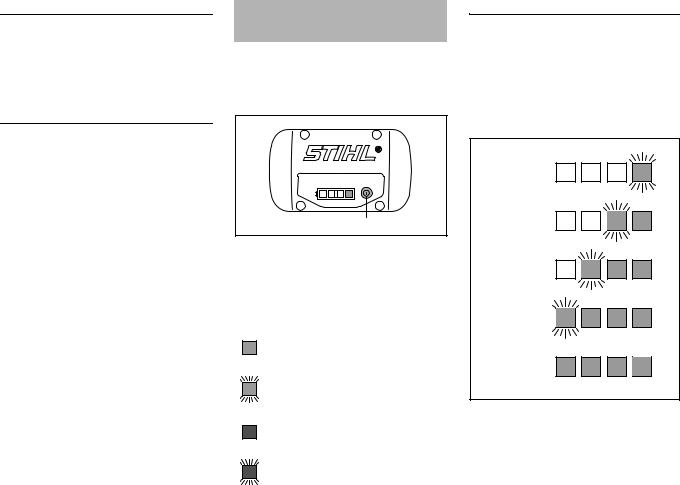
AL 100 charger
This charger waits for the battery to cool down before starting the charging process. The battery is cooled normally by heat transfer to the ambient air.
End of charge
The charger switches itself off automatically when the battery is fully charged:
–Light emitting diodes on the battery go off
–The light emitting diode on the charger goes off
–The charger's fan is switched off (if charger is so equipped)
Remove the charged battery from the charger.
Light Emitting Diodes (LED) on Battery
Four light emitting diodes show the battery's state of charge and any problems that occur on the battery or power tool.
1 |
3901BA010 KN |
NPress button (1) to activate the display – the display goes off automatically after 5 seconds.
The light emitting diodes can glow or flash green or red.
Light emitting diode glows con- tinuously green.
Light emitting diode flashes green.
Light emitting diode glows con- tinuously red.
Light emitting diode flashes red.
English
During Charging Process
The light emitting diodes glow continuously or flash to indicate the progress of charge.
During charging the capacity that is currentlybeingchargedisindicatedbya green flashing light emitting diode.
0 - 20 % |
|
|
20 - 40 % |
|
|
40 - 60 % |
|
|
60 - 80 % |
|
|
80 - 100 % |
KN |
|
3901BA016 |
||
|
When the charging process is completed, the light emitting diodes on the battery go off automatically.
If the light emitting diodes on the battery flash or glow red – see "If the red light emitting diodes glow continuously / flash".
HLA 65 |
17 |
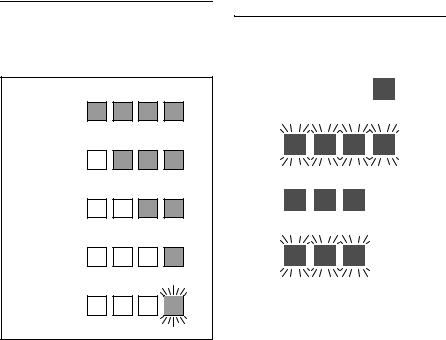
English
During Operation
The green light emitting diodes glow continuouslyorflashtoindicatethestate of charge.
80 - 100 %
60 - 80 %
40 - 60 %
20 - 40 %
0 - 20 % |
KN |
|
3901BA016 |
||
|
If the light emitting diodes on the battery flash or glow red – see "If the red light emitting diodes glow continuously / flash".
If the red light emitting diodes glow continuously / flash
|
|
|
|
|
|
|
|
|
|
|
|
|
3901BA017 KN |
|
|
|
|
|
|
|
|
|
|
|
|
|
|
|
|
|
|
|
|
|
|
|
|
|
|
|
|
|
|
|
|
|
|
|
|
|
|
|
|
|
|
|
|
|
|
|
|
|
|
|
|
|
|
|
|
|
|
|
|
|
|
|
|
|
|
|
|
|
|
|
|
|
|
|
|
|
|
|
|
|
|
|
|
|
|
|
|
|
|
|
|
|
|
|
|
|
|
|
|
|
|
|
|
|
|
|
|
|
|
|
|
|
|
|
|
|
|
|
|
|
|
|
|
|
|
|
|
|
|
|
|
|
|
|
|
|
|
|
|
|
|
|
|
|
|
|
|
|
|
|
|
|
|
|
|
|
|
|
|
|
|
|
|
|
|
|
|
|
|
|
|
|
|
|
|
|
|
|
|
|
|
|
|
|
|
|
|
|
|
|
|
|
|
|
|
|
|
|
|
|
|
|
|
|
|
|
|
|
|
|
|
|
|
|
|
|
|
|
|
|
|
|
|
|
|
|
|
|
|
|
|
|
|
|
|
|
|
1 light emitting |
|
Battery is too hot1) |
|||||||||||
diode glows con- |
|
2)/cold1) |
|||||||||||
tinuously red: |
|
|
|
|
|
|
|
||||||
|
|
|
|
|
|
|
|
|
|
|
|
|
|
4 light emitting |
|
Fault in battery 3) |
|||||||||||
diodes flash red: |
|
|
|
|
|
|
|
||||||
|
|
|
|
|
|
|
|
|
|
|
|
|
|
3 light emitting |
|
Power tool is too |
|||||||||||
diodes glow con- |
|
hot–allowittocool |
|||||||||||
tinuously red: |
|
down. |
|||||||||||
|
|
|
|
|
|
|
|
|
|
|
|
|
|
3 light emitting |
|
Fault in power tool |
|||||||||||
diodes flash red: |
4) |
|
|
|
|
|
|||||||
|
|
|
|
|
|
|
|
|
|
|
|
|
|
1)During charging process: Charging process starts automatically after the battery has cooled down / warmed up.
2)During operation: Power tool cuts out – allow battery to cool down; it may be necessary to take the battery out of the power tool for this purpose.
3)Electromagnetic interference or fault. Take the battery out of the power tool and refit it. Switch on the power tool – if the light emitting diodes still flash, the battery is faulty and must be replaced.
4)Electromagnetic interference or fault. Take the battery out of the power tool and refit it. Switch on the power tool – if the light emitting diodes still flash, the power tool is faulty and must be checked by a servicing dealer – STIHL recommends an authorized STIHL servicing dealer.
18 |
HLA 65 |
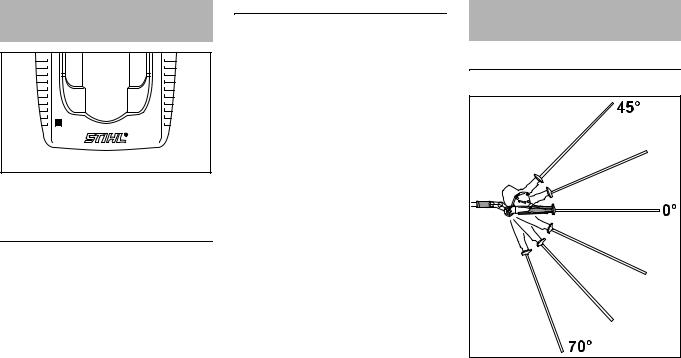
Light Emitting Diodes (LED) on Charger
1 |
KN |
|
3901BA019 |
The light emitting diode (1) lights up green or flashes red.
Green continuous light ...
... means the following: The battery
–is being charged
–is too hot and must cool down before it is charged
See also "Light Emitting Diodes (LED) on Battery".
The green light emitting diode on the charger goes off as soon as the battery is fully charged.
Red flashing light ...
... means the following:
–No electrical contact between battery and charger – remove and refit the battery
–Faulty battery – see also "Light Emitting Diodes (LED) on Battery".
–Charger faulty – have checked by a servicing dealer. STIHL recommends a STIHL servicing dealer.
English
Adjusting the Cutter Bar
Angle Adjuster - 115°
4866BA011 KN |
The angle of th cutter bar can be adjusted upwards in 2 stages from 0° (straight) to 45°, and downwards in 3 stages from 0° to 70°. There are therefore 6 possible working positions.
Thereisalsoaspecialtransportposition for the cutter bar – see section on "Transport Position".
 WARNING
WARNING
To reduce the risk of injury, make adjustment only with cutting blades at a standstill – machine switched off, retaining latch set to ƒ.
HLA 65 |
19 |
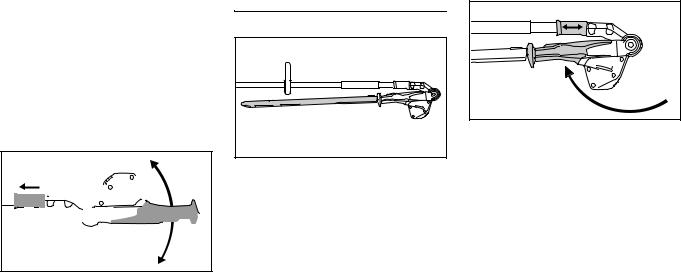
English
 WARNING
WARNING
The gearbox becomes hot during operation. To reduce the risk of burn injury, do not touch the gear housing.
 WARNING
WARNING
To reduce the risk of injury, never touch the blades while making adjustments.






 2 1
2 1 













KN4866BA012
NSwitch off the machine and set the retaining latch to ƒ.
NPull back the sliding sleeve (1) and use the swivel handler (2) to adjust the joint by one or several holes.
NRelease the sliding sleeve (1) and make sure the lock pin engages the quadrant.
The sliding sleeve butts against the housing when the pin is properly engaged (after making adjustment).
 WARNING
WARNING
Never use the swivel handle for normal cutting operations – risk of injury.
Transport Position
4866BA013 KN |
The cutter bar can be folded flat against the drive tube and locked in position to save space during transportation. Your machine cannot be switch on while it is in the transport position.
 WARNING
WARNING
To reduce the risk of injury, always switch off the machine – retaining latch to ƒ– remove the battery and fit the bladescabbardbeforemovingthecutter blade into the transport position or from the transport position to the normal operating position.
|
1 |
2 |
KN |
|
4866BA014 |
NSwitch off the machine, move the retaininglatchtoƒandremove the battery.
N Fit the blade scabbard.
NPull back the sliding sleeve (1) and use the swivel handle (2) to swing the joint downwards – in direction of drivetube–untilthecutterbarisflat against the drive tube.
NRelease the sliding sleeve (1) and allow lock pin to engage the hole in the housing.
The sliding sleeve butts against the housing when the pin is properly engaged (after making adjustment).
20 |
HLA 65 |
